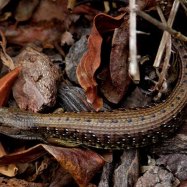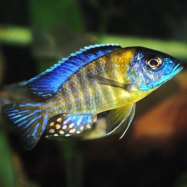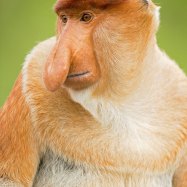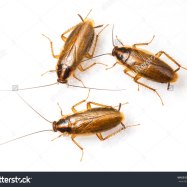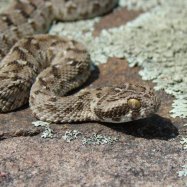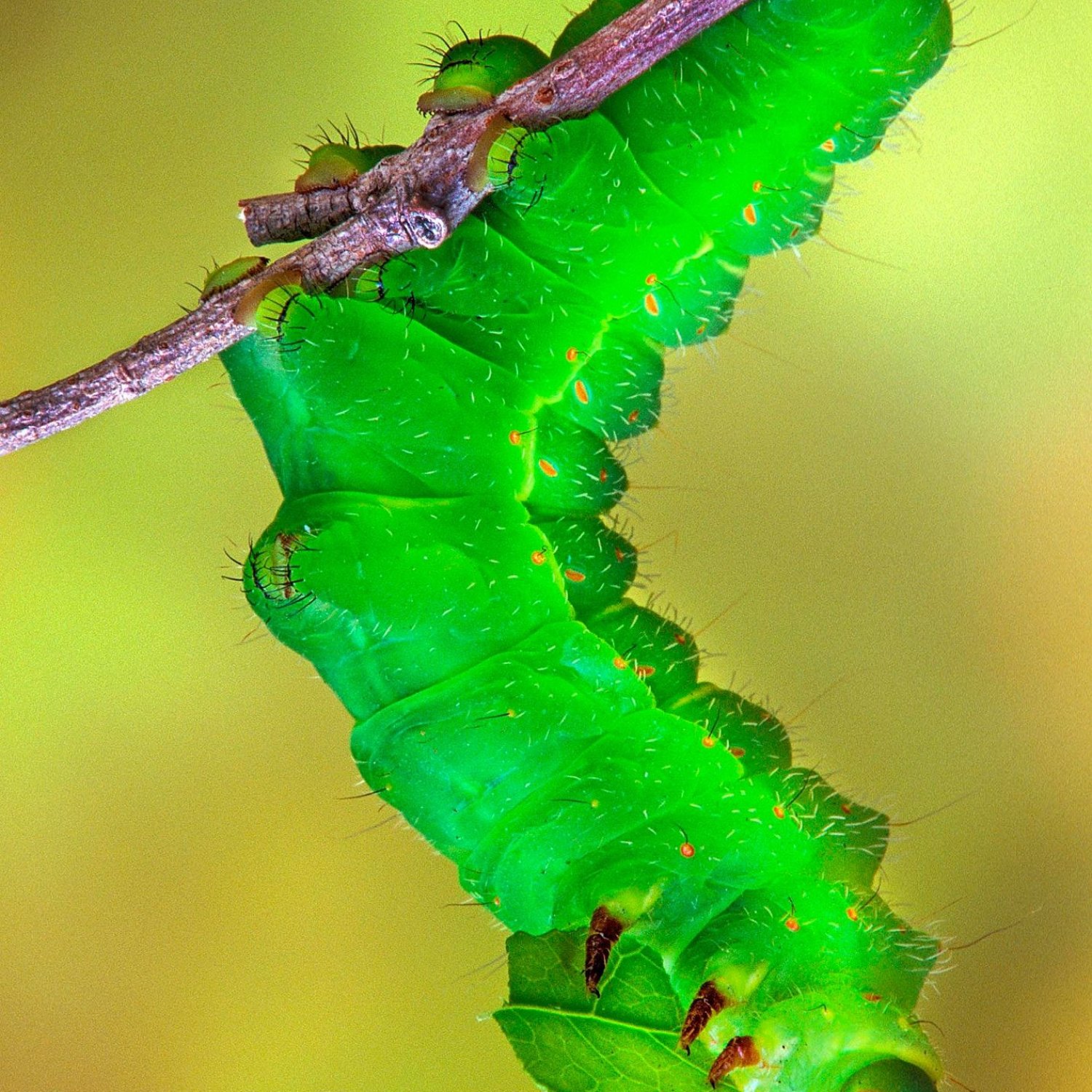
Luna Moth Caterpillar
2.5 to 3.5 inches (6.4 to 8.9 cm)
The Luna Moth Caterpillar is a unique creature with a distinct body shape. Found in Eastern North America, it can grow to a length of 2.5 to 3.5 inches. Belonging to the Saturniidae family, it is known for its bright green color and helps control plant populations by feeding on leaves. #LunaMothCaterpillar #Saturniidae #NorthAmerica #naturelovers
Animal Details Summary:
Common Name: Luna Moth Caterpillar
Kingdom: Animalia
Habitat: Deciduous forests
Introducing the Enigmatic Luna Moth Caterpillar
When we think of caterpillars, we often imagine soft, fuzzy creatures munching on leaves in the garden. However, one type of caterpillar stands out from the rest due to its unique appearance and behaviors – the Luna Moth Caterpillar. With its striking green color and distinctive shape, this caterpillar has fascinated many naturalists and enthusiasts. In this article, we will delve deeper into the world of the Luna Moth Caterpillar, exploring its characteristics, habitat, and more Luna Moth Caterpillar.A Closer Look at the Luna Moth Caterpillar
Scientifically known as Actias luna, the Luna Moth Caterpillar gets its name from its characteristic green coloration that resembles the moon. It belongs to the class Insecta and order Lepidoptera, making it a close relative of butterflies and other moths. This species is part of the Saturniidae family, which includes over 2,300 species worldwide.The Luna Moth Caterpillar is mainly found in the eastern regions of North America, particularly in the United States and Canada. Its geographical distribution is widespread, but it can primarily be seen in deciduous forests, making its home in the leaves of its host trees. The caterpillar's feeding method is herbivorous, meaning it feeds on leafy greens to sustain itself.
Exploring the Characteristics of the Luna Moth Caterpillar
One of the most distinctive features of the Luna Moth Caterpillar is its body color, which is a bright, vibrant green. This vibrant shade helps camouflage the caterpillar among the leaves of the trees it lives on, making it difficult for predators to spot it. Its rich green color also signifies its strong connection to nature and its environment Lemon Cuckoo Bumblebee.Apart from its color, the Luna Moth Caterpillar has a cylindrical body shape, ranging from 2.5 to 3.5 inches in length (6.4 to 8.9 cm). It has six true legs and ten prolegs, which are fleshy, leg-like structures found on its abdomen. The prolegs have small hooks, allowing the caterpillar to grip onto branches and leaves as it moves around.
Another unique characteristic of the Luna Moth Caterpillar is its segmented body. It has multiple sections, each with a pair of spiracles, which are tiny holes on its body that allow it to breathe. These segments are also lined with fine hair, giving the caterpillar a fuzzy appearance.
The Fascinating Transformation of the Luna Moth Caterpillar
The Luna Moth Caterpillar is one of the most captivating creatures to witness during its life cycle. Like all moths and butterflies, this caterpillar undergoes a process called metamorphosis, transforming from a crawling caterpillar to a beautiful flying moth.Initially, the caterpillar goes through five stages of molting, shedding its skin and growing bigger each time. As it reaches its final stage, the caterpillar will spin a silken cocoon around itself, where it will undergo a biological transformation. During this time, the caterpillar's body changes and develops, and eventually, it will emerge as a stunning Luna Moth.
The Adult Luna Moth – A Sight to Behold
Once the transformation is complete, the Luna Moth will emerge from its cocoon as a beautiful, green-winged adult moth. The wingspan of an adult Luna Moth can range from 4 to 5 inches (10 to 12.7 cm), making it one of the largest moths in North America. Unlike the caterpillar, the adult Luna Moth does not have a mouth, as it does not need to eat during its short adult lifespan.Another striking feature of the Luna Moth is its long, thread-like tails, which can extend up to 4 inches (10.16 cm) from its hindwings. These long tails serve no purpose but act as a defense mechanism against predators. When threatened, the moth can flick its wings and tails, creating an illusion of multiple heads, baffling and confusing its predators.
The Importance of the Luna Moth Caterpillar in the Ecosystem
Apart from its unique characteristics and transformation, the Luna Moth Caterpillar plays a vital role in the ecosystem. As herbivores, they are crucial in maintaining a healthy balance in their habitat. By feeding on leaves, they also contribute to the nutrient cycle of the forest, aiding in the decomposition process.Moreover, the Luna Moth is also a crucial food source for many animals in the forest, including birds, rodents, and even other insects. Their bright green color serves as a form of camouflage, making it difficult for predators to spot them among the leaves. If they are spotted, they can secrete a bitter, toxic substance from their bodies, making them unappealing to predators.
Conservation of the Luna Moth Caterpillar
Despite their importance in the ecosystem, the Luna Moth Caterpillar, like many other species, is facing threats from human activities. Deforestation, habitat loss, and climate change all have a significant impact on their population. As a result, experts have placed this species as vulnerable on the International Union of Conservation of Nature (IUCN) Red List, signaling the need for conservation efforts to protect its population.There are a few simple ways that we can help preserve the Luna Moth Caterpillar. One is by planting native trees and shrubs in our gardens, providing the caterpillar with a suitable habitat and food source. We can also limit the use of pesticides, which may harm not only the caterpillar but also other beneficial insects in the ecosystem.
The Wondrous World of the Luna Moth Caterpillar
In conclusion, the Luna Moth Caterpillar, with its distinct green coloration and captivating transformation process, continues to fascinate and intrigue nature lovers and scientists alike. Its role in the ecosystem and the threats it faces highlight the importance of preserving and protecting this species. As we continue to discover and appreciate the beauty of these creatures, let us remember to do our part in preserving their wondrous world.

Luna Moth Caterpillar
Animal Details Luna Moth Caterpillar - Scientific Name: Actias luna
- Category: Animals L
- Scientific Name: Actias luna
- Common Name: Luna Moth Caterpillar
- Kingdom: Animalia
- Phylum: Arthropoda
- Class: Insecta
- Order: Lepidoptera
- Family: Saturniidae
- Habitat: Deciduous forests
- Feeding Method: Herbivorous
- Geographical Distribution: North America
- Country of Origin: United States and Canada
- Location: Eastern North America
- Animal Coloration: Green
- Body Shape: Cylindrical
- Length: 2.5 to 3.5 inches (6.4 to 8.9 cm)
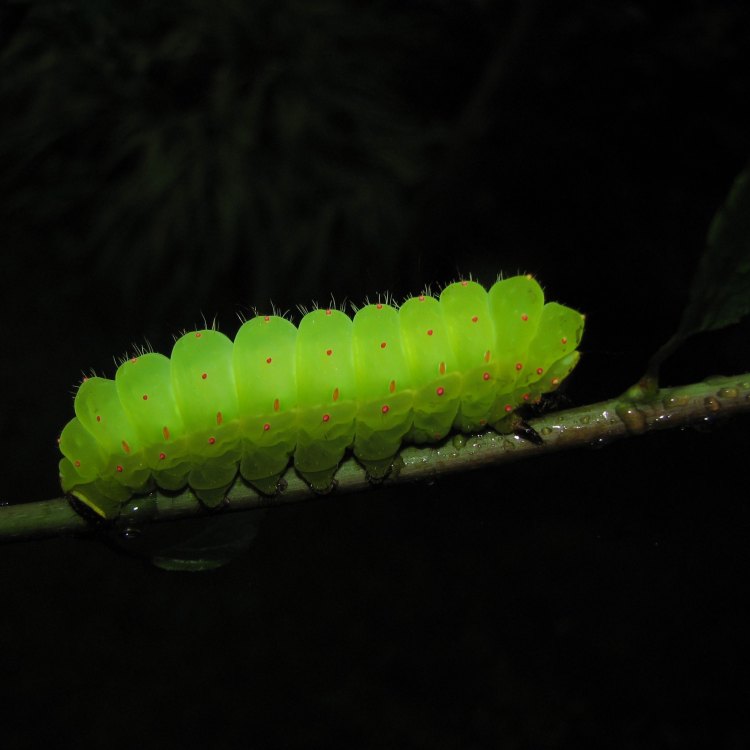
Luna Moth Caterpillar
- Adult Size: Wingspan of 3 to 4.5 inches (7.6 to 11.4 cm)
- Average Lifespan: About 7 to 10 days as an adult
- Reproduction: Sexual
- Reproductive Behavior: Males and females mate during the night
- Sound or Call: None
- Migration Pattern: No long-distance migration
- Social Groups: Solitary
- Behavior: Nocturnal
- Threats: Habitat loss, pesticide use
- Conservation Status: Not listed as endangered
- Impact on Ecosystem: Important pollinators
- Human Use: None
- Distinctive Features: Large green caterpillar with long tails
- Interesting Facts: Luna moth caterpillars spin cocoons made of silk and leaves
- Predator: Birds, reptiles, and mammals
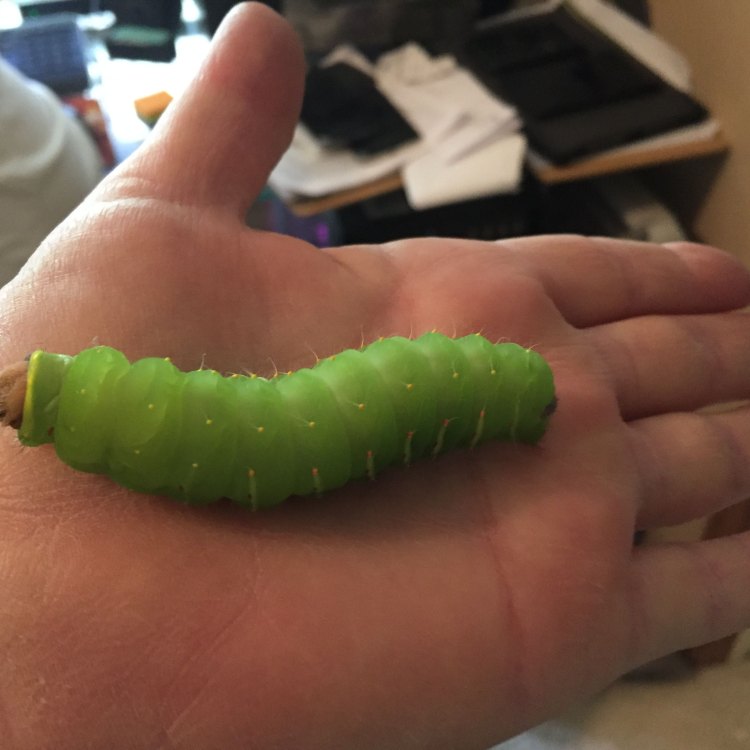
Actias luna
The Magnificent Luna Moth: A Unique and Elegant Creature
The world is full of remarkable creatures, each with its own unique features that make them stand out. From the majestic lion to the tiny hummingbird, nature is full of surprises. One such creature that captures the imagination is the Luna Moth. This magnificent insect is not only visually stunning but has a fascinating lifecycle that is worth exploring PeaceOfAnimals.Com. In this article, we will delve into the world of the Luna Moth caterpillar, its transformation into an adult moth, and the vital role it plays in our ecosystem.The Luna Moth (Actias luna) is a species of moth native to North America. It is considered one of the most beautiful and recognizable moths in the region due to its large size and distinct features. The adult Luna Moth has a wingspan of 3 to 4.5 inches, making it one of the larger moth species. Its wings are a vibrant green color with intricate patterns and long, delicate tails, giving it an almost ethereal appearance. Its graceful flight and striking appearance have earned it the nickname "moon moth."
But before it can take flight and showcase its beauty, the Luna Moth goes through a remarkable transformation, starting as a humble caterpillar. The Luna Moth caterpillar is a herbivore and feeds primarily on the leaves of deciduous trees such as maple, oak, hickory, and walnut Long Eared Owl. It is distinguishable from other caterpillars due to its size, reaching up to 3 inches when fully grown. Its body is bright green with narrow white, yellow, and red stripes, giving it a stunning and unique appearance.
One of the most fascinating features of the Luna Moth caterpillar is its ability to spin a cocoon using silk and leaves, similar to other moths and butterflies. The caterpillar usually attaches its cocoon onto a branch, creating a secure and safe space for its metamorphosis. This cocoon serves as protection from predators and extreme weather conditions, allowing the caterpillar to develop into its adult form undisturbed.
After about two weeks, the caterpillar emerges from its cocoon as an adult moth. However, the transformation does not stop there. The adult Luna Moth has to wait for its wings to expand and dry out before it can take flight. This process takes a few hours, and during this time, the moth is particularly vulnerable to predators. Once its wings are fully developed, the Luna Moth is ready to take to the skies.
It is worth noting that the lifespan of an adult Luna Moth is only 7 to 10 days. This short lifespan is due to the moth's lack of a functional digestive system. Unlike other moths and butterflies, the Luna Moth does not have a mouth, and therefore, it cannot feed or survive on its own. Its sole purpose as an adult is to mate and lay eggs to continue the lifecycle.
Reproduction for Luna Moths is a sexual process, with males and females mating during the night. They are mostly active during the late spring and early summer months, with peak mating season being in May and June. This nocturnal behavior is common among moths, and it is believed to help them avoid predators in the dark.
Despite its short lifespan, the Luna Moth is an important pollinator in our ecosystem. As they move from flower to flower collecting nectar, they also transfer pollen, aiding in the reproduction of various plant species. This role makes them essential for the survival and diversity of our natural environment.
However, the Luna Moth, like many other insect species, faces threats to its existence. The two main threats are habitat loss and pesticide use. As human populations expand, there is a continuous decline in natural habitats, leading to a decrease in food sources for the Luna Moth caterpillar. Pesticides, used to control pests in agriculture, can also harm these insects, which are not immune to the chemicals.
Despite these threats, the Luna Moth is not currently listed as endangered. However, it is essential to monitor their populations and take action to protect them, as they are vital for maintaining the balance in our ecosystem. This includes efforts to preserve and restore natural habitats, as well as using alternative methods for pest control that do not harm beneficial insects.
In terms of human use, the Luna Moth has no significant impact. They are not used in any commercial or industrial processes, nor are they harvested for any purpose. However, they do have a significant impact in terms of education and research. The study of Luna Moths and their lifecycles has helped scientists understand the broader patterns of insect behavior and ecology.
In conclusion, the Luna Moth is an exquisite and elegant creature that deserves our attention and admiration. From its large size and vibrant green wings to its unique lifecycle and role in our ecosystem, this moth is truly one of a kind. Its distinctive features, such as the large green caterpillar with long tails, make it easily recognizable and a delight to observe in its natural habitat. Whether it's the intricate patterns on its wings or the fact that it spins its cocoon with silk and leaves, there is always something new to learn about the Luna Moth. So next time you come across this magnificent insect, take a moment to appreciate its beauty and the vital role it plays in our world.
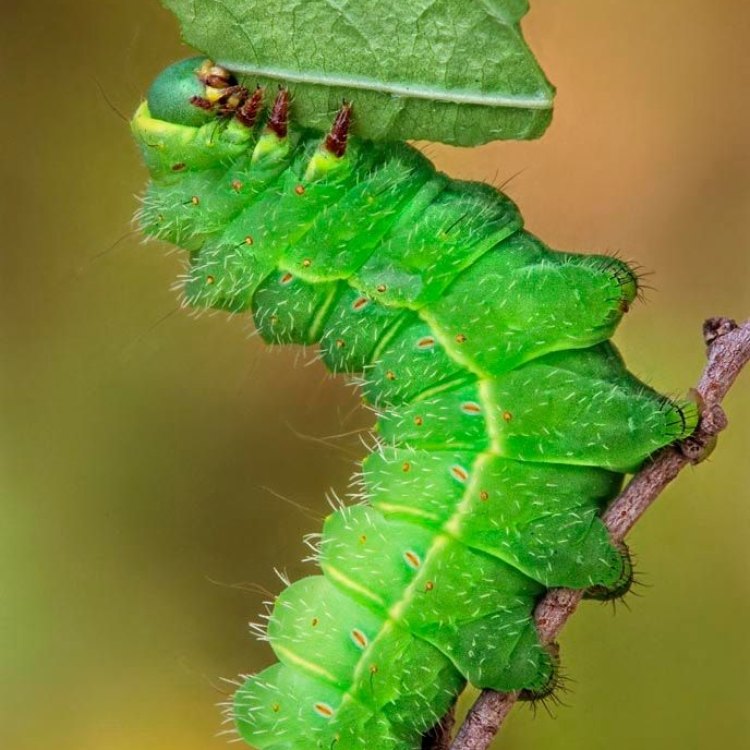
Introducing the Enigmatic Luna Moth Caterpillar
Disclaimer: The content provided is for informational purposes only. We cannot guarantee the accuracy of the information on this page 100%. All information provided here may change without prior notice.

